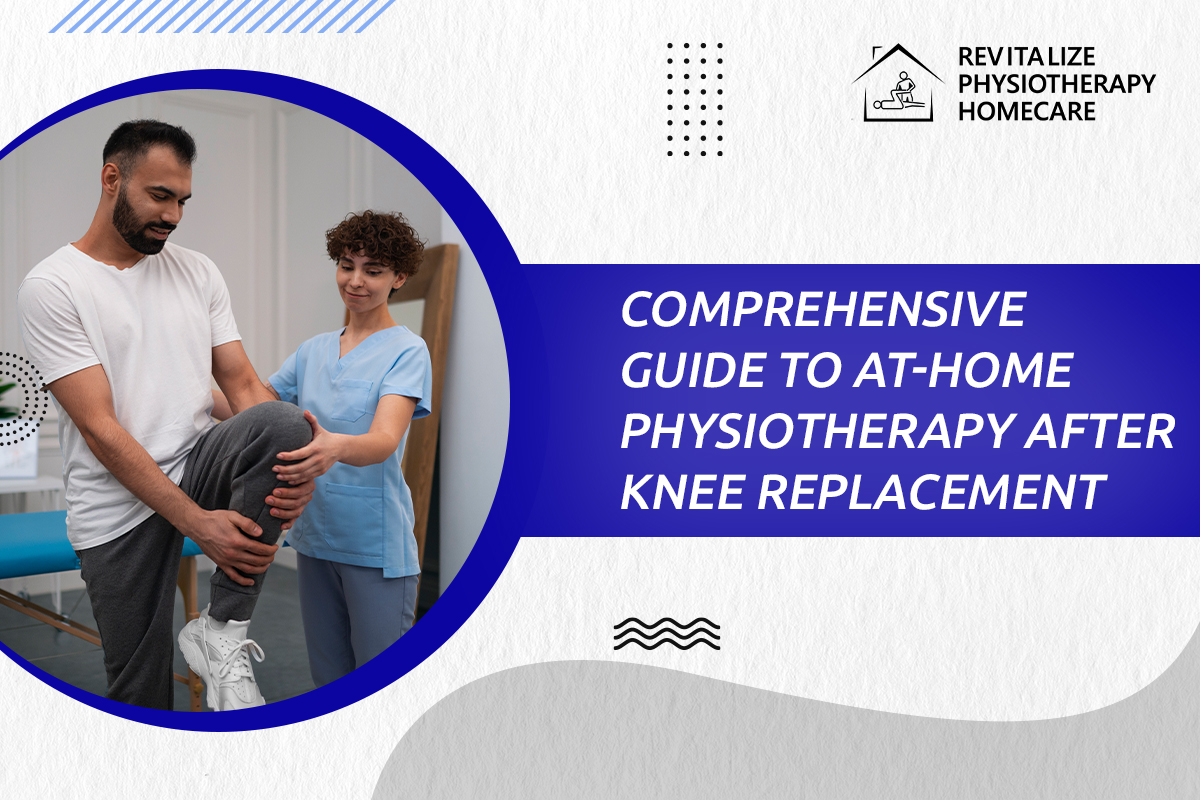Comprehensive Guide to At-Home Physiotherapy After Knee Replacement
Recovering after knee replacement surgery can be challenging, but with the correct care and support, you can make significant progress toward regaining mobility and strength. At-home physiotherapy is critical in this process because it allows you to recuperate in the comfort of your own home while adhering to a regimen designed specifically for you. This comprehensive guide will provide you valuable insights into managing your rehabilitation with at-home physiotherapy after knee replacement.
Understanding Knee Replacement Recovery
Knee replacement surgery, also known as knee arthroplasty, is replacing the damaged or worn-out surfaces of the knee joint with artificial pieces to alleviate pain and recover function. Recovery from the surgery is a long process that requires careful monitoring of physical activity, pain, and mobility.
The Role of At-Home Physiotherapy
Physiotherapy at home begins right after you are discharged from the hospital. The key objectives of at-home therapy are as follows:
- Pain Management: Effective techniques to manage and reduce pain, which is crucial for encouraging movement.
- Preventing Complications: Exercises designed to prevent complications such as blood clots and stiffness.
- Improving Mobility and Strength: Gradual exercises to increase range of motion and rebuild strength.
- Achieving Independence: Activities and strategies aimed at enabling you to perform daily tasks independently.

Initial Steps in At-Home Physiotherapy
- Managing Swelling and Pain:
- Use ice packs around the knee to reduce swelling.
- Elevate your leg to decrease swelling and pain.
- Use medications as prescribed for pain relief.
- Starting with Basic Movements:
- Begin with gentle, non-weight-bearing activities, such as bed-supported knee bends and ankle pumps.
- Gradually introduce weight-bearing exercises as recommended by your physiotherapist.
Developing a Routine
Your physiotherapist will develop a personalized exercise regimen based on your specific situation. A typical routine may include:
- Range of Motion Exercises: Initially, these might include assisted knee bends and gradual progression to more active exercises.
- Strengthening Exercises: Start with light exercises like quad sets and straight leg raises, then slowly introduce more challenging exercises as strength improves.
- Walking: Initially with the aid of a walker or crutches, and gradually progressing to unassisted walking.
- Balance Exercises: Crucial for regaining stability and confidence in your movements.
Advanced Exercises and Activities
As your recovery progresses, more rigorous exercises and activities will be incorporated into your routine:
- Aerobic Exercises: Low-impact activities such as cycling on a stationary bike can improve cardiovascular health without putting too much strain on your knee
- Outdoor Walking: Short walks outside can help you adapt to different surfaces and inclines.
- Functional Training: Exercises that mimic daily activities, like climbing stairs and getting in and out of chairs, to help you return to normal life.
Monitoring Progress and Adjusting the Plan
- Regular Assessments: Have regular check-ins with your physiotherapist to assess your progress and adjust your exercise plan as needed.
- Pain Monitoring: Keep a log of your pain levels to discuss with your therapist, helping them to tailor your pain management strategies effectively.
- Setbacks: Be aware of signs of setbacks, such as increased pain, swelling, or decreased mobility, and contact your healthcare provider if these occur.

Tips for Success
- Stay Consistent: Adherence to your prescribed physiotherapy schedule is crucial for recovery.
- Be Patient: Recovery timelines can vary, and it’s important to understand that progress might be slow.
- Utilize Support: Engage with community groups or forums for additional support and motivation.
Conclusion
At-home physiotherapy after knee replacement surgery is an important part of your recovery, as it helps you restore strength, mobility, and independence. You can attain the greatest potential results by recognizing the stages of recovery, sticking to an organized exercise regimen, and actively participating in your own healing process. Remember that every step you take in recovery is a step closer to returning to an active lifestyle.
If you need expert guidance or treatment for your Knee Replacement, visit Revitalize Physiocare. We are the best knee replacement physio at home. Our professional physiotherapists treat a variety of pain issues, including lower back pain.
To schedule an appointment for physio after knee surgery, please contact us at 905-452-0222. Or, you can also send an email to us at revitalizephysio@gmail.com.




